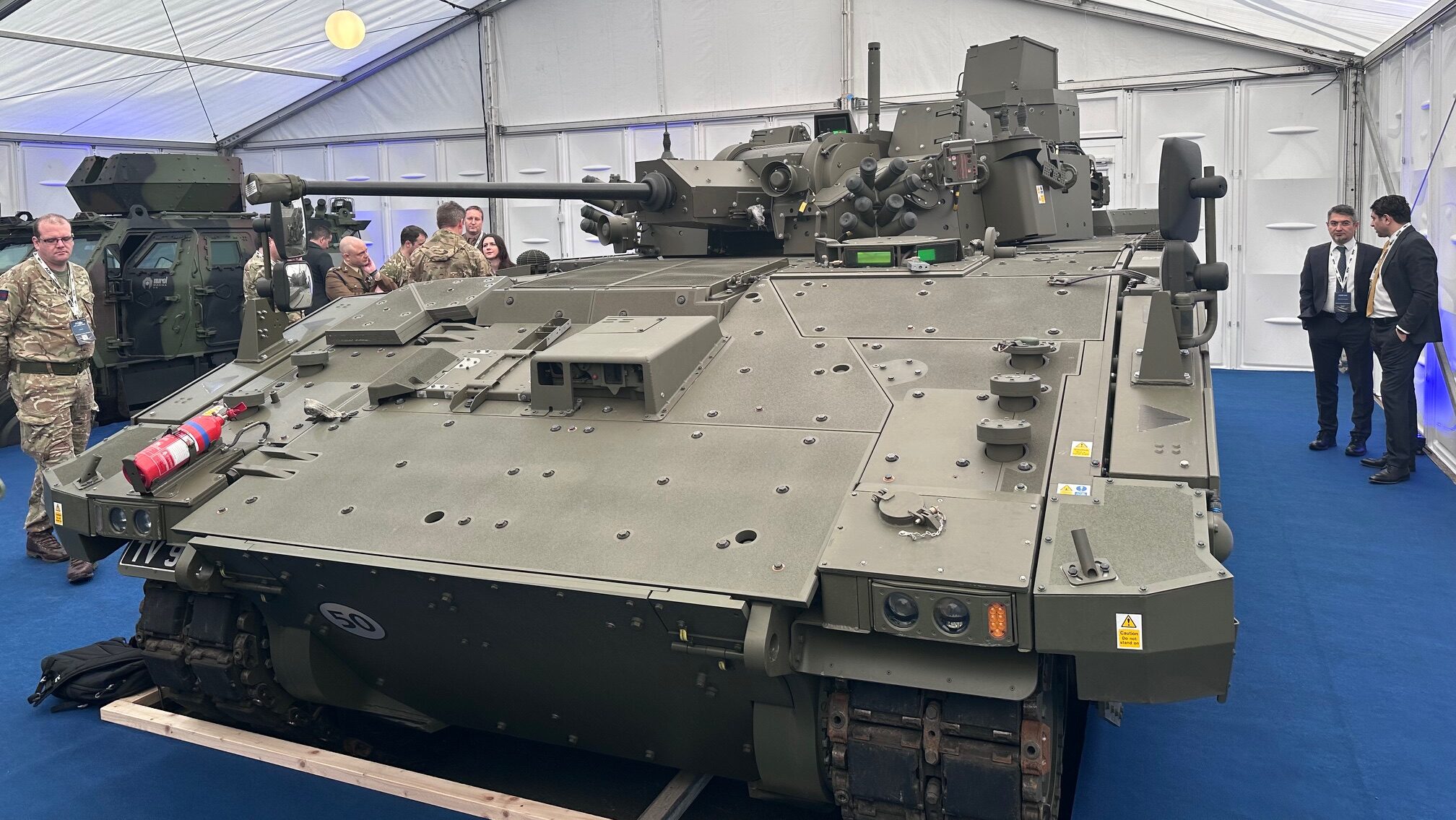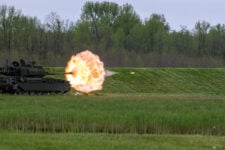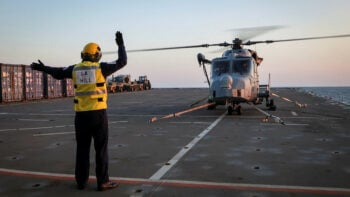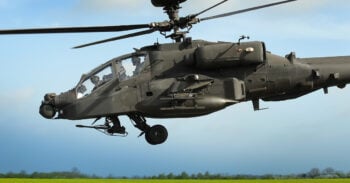
The British Army is again testing General Dynamics Land Systems’ Ajax armored fighting vehicles after noise and vibration problems plunged the program into uncertainty. (Tim Martin / Breaking Defense)
IAV 2024 — The UK is pushing hard to secure lucrative export land vehicle and equipment contracts by focusing on “four priority campaigns” that could deliver a combined total of £20 billion ($26 billion) in new orders, but the strategy won’t work if rival aerospace and maritime campaigns receive greater political support, the head of the British Army warned today.
Gen. Patrick Sanders, chief of the General Staff, explained during the IQPC International Armoured Vehicles Conference in London that the service is currently “seeing land export opportunities grow much faster than expected,” and pledged to turnaround the British Army’s dismal export track record that saw it contribute just 4 percent, equivalent to $4.5 billion, toward all UK military exports between 2012 and 2021.
“The last significant land exports were Desert Warrior [Infantry Fighting Vehicles] to Kuwait and Challenger 2 [Main Battle Tanks] to Oman in the 1990s,” Sanders said. But he stressed that new business opportunities are now on the horizon courtesy of “a series of international engagements and four priority campaigns” which, if successful, would land orders in the region of £20 billion ($26 billion).
RELATED: First look at UK’s Challenger 3 main battle tank prototype
Sanders shared few details about the nature of the export campaigns, not disclosing which vehicles or equipment have been offered or to which nations, but did mention the proposals are based around the “right strategic partnerships [and] founded on shared capability and interoperability.”
He added, however, that “promising green shoots [means] land export campaigns and the small- and medium-sized enterprises that deliver them, need protection against massive maritime and aerospace campaigns that dominate the political narrative, to the exclusion of the relative simplicity and pace of land exports, which should be celebrated and promoted.”
British Army acquisition cancellations, misspending, vehicle technical faults and a shrinking land equipment national industrial base have all contributed in recent times to limit export potential, while affordability issues continue to hang over the service’s long-term Future Soldier modernisation programme. Additionally, the war in Ukraine has placed in sharp relief, the need for the service to increase capabilities and accelerate procurements.
There are signs that newer platforms on order, chiefly the Boxer Mechanized Infantry Vehicle (MIV) and Challenger 3 Main Battle Tank are making meaningful progress, while the restart of Ajax armored fighting vehicle tests show it is belatedly on course to enter service after years of disruption, largely caused by safety issues related to previous test crew personnel suffering hearing loss from excessive noise and vibration.
It was also revealed earlier this week that London has decided to go ahead with acquiring newer Boxer vehicles, while the German-UK joint venture Rheinmetall BAE Systems Land (RBSL) shared imagery of a first Challenger 3 prototype after completing manufacturing of the vehicles at company facilities in Telford, England.
In all, the British Army expects to take delivery of more than 1,200 armored vehicles over the next five years.
Elsewhere, Sanders suggested that the UK should prepare to follow the approach of eastern and northern European allies in readying for a fight against Russia by “laying the foundations for national mobilisation” — a potential that raised eyebrows after his speech was leaked to the British press.
Aloha: Fixes ongoing, then Army’s new watercraft prototype is Hawaii bound for testing
“Everything that we can knock off that list we will do in the archipelago…because that allows us to do the tests in the environment that the vessel will operate in ultimately,” said Maj. Gen. Jered Helwig.


























